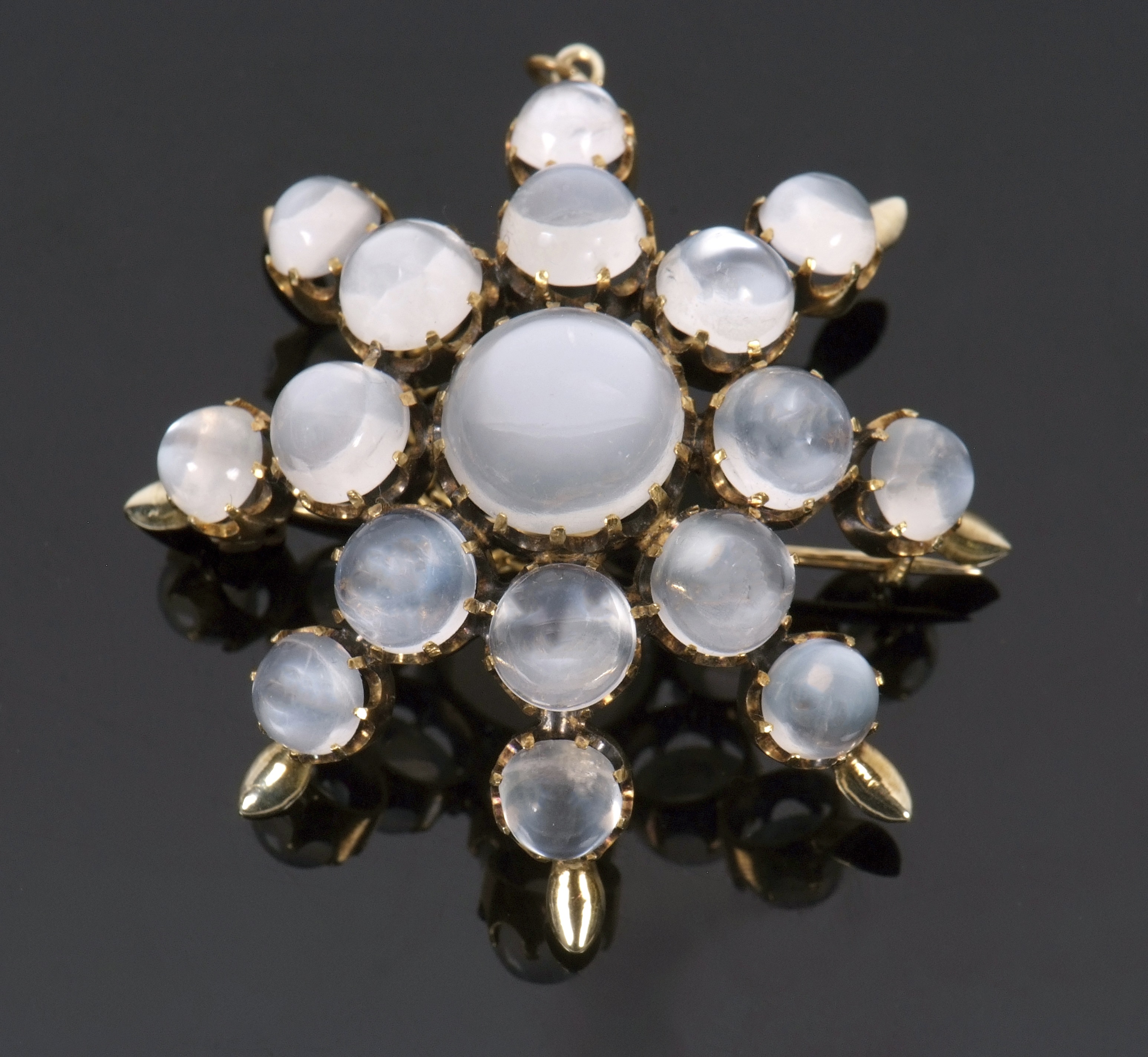

08/06/2024 General News
The jewellery sections of Keys’ thrice-yearly Fine Sales are always a highlight, with the best quality and most sought-after pieces resulting in brisk and competitive bidding among collectors and dealers alike, writes Angela Marshall.
As you might imagine, lots containing the best quality stones including diamonds, rubies and sapphires perform well, but the demand is not just for pieces which contain what you might call ‘inherent’ value.
Buyers seek out jewellery for a number of reasons, and these include aesthetic value, top-quality craftsmanship, leading designers and even spiritual reasons.
One such stone is moonstone, a potassium aluminium silicate which is found in Sri Lanka, Burma (Myanmar), Brazil, India, Madagascar and the United States. The stone’s internal structure scatters the light that strikes it, creating a phenomenon known as adularescence – the visual effect of which is reminiscent of the full moon shining through a veil of thin, high clouds (hence the name).
According to Hindu mythology, the stone is made of solidified moonbeams, and many other cultures associate it with moonlight. Moonstone is supposed to bring good luck, and some believe that if you hold one in your mouth at full moon, you can tell the future.
The stone was particularly popular in the Arts & Crafts and Art Nouveau periods (broadly the second half of the 19th century through to the first 20 years of the 20th century). Leading artists and designers such as René Lalique and Louis Tiffany used moonstone extensively in jewellery; it had a renaissance during the 1960s ‘Flower Power’ and 1990 New Age periods, and moonstone jewellery is still made today.
Another type of jewellery which is performing well in the saleroom is enamelled jewellery. Enamelling is a technique in which glass is fused to metal, and it has been practised for at least three millennia. Popular in the 15th century, enamelling fell completely out of favour before it was revived again the late 19th century, arguably enjoying its historic heyday during the Art Nouveau and Art Deco periods.
Condition is key when buying enamel, as it is fragile and prone to chipping and other damage.
There are various techniques of decorating enamel, ranging from Cloisonné, in which flattened wires are placed in a pattern on a base metal sheet and the resulting compartments filled with different types of melted glass, to Champlevé, where the pattern is set in low relief on a slightly thicker plate.
But it is painted enamel which really catches the modern buyer’s eye, both for its exquisite beauty, and also for the sheer craftsmanship and artistry involved in creating it.
The subject matter for painted enamel is varied, and includes scenes from abroad which were popular with those returning from a Grand Tour to remind them of where they had been, and animals of every description.
In fact, animals remain very popular in every kind of jewellery, and this is another category which always performs well at auction. This trend really started in Victorian times, with depiction of all kinds of natural history, especially insects such as butterflies, dragonflies and bees. In more modern times it is dogs and horses which have widest appeal, but also – perhaps weirdly – frogs and elephants.
All three of these types of jewellery perform well in the saleroom, and prove that the most precious of stones or metals are not necessarily needed to achieve a healthy hammer price. It is encouraging that high quality craftsmanship and artistry, and aesthetic appeal are in demand alongside the more traditional prized materials.
Keys is currently accepting entries for its three day Summer Fine Sale in July. For more details visit www.keysauctions.co.uk.